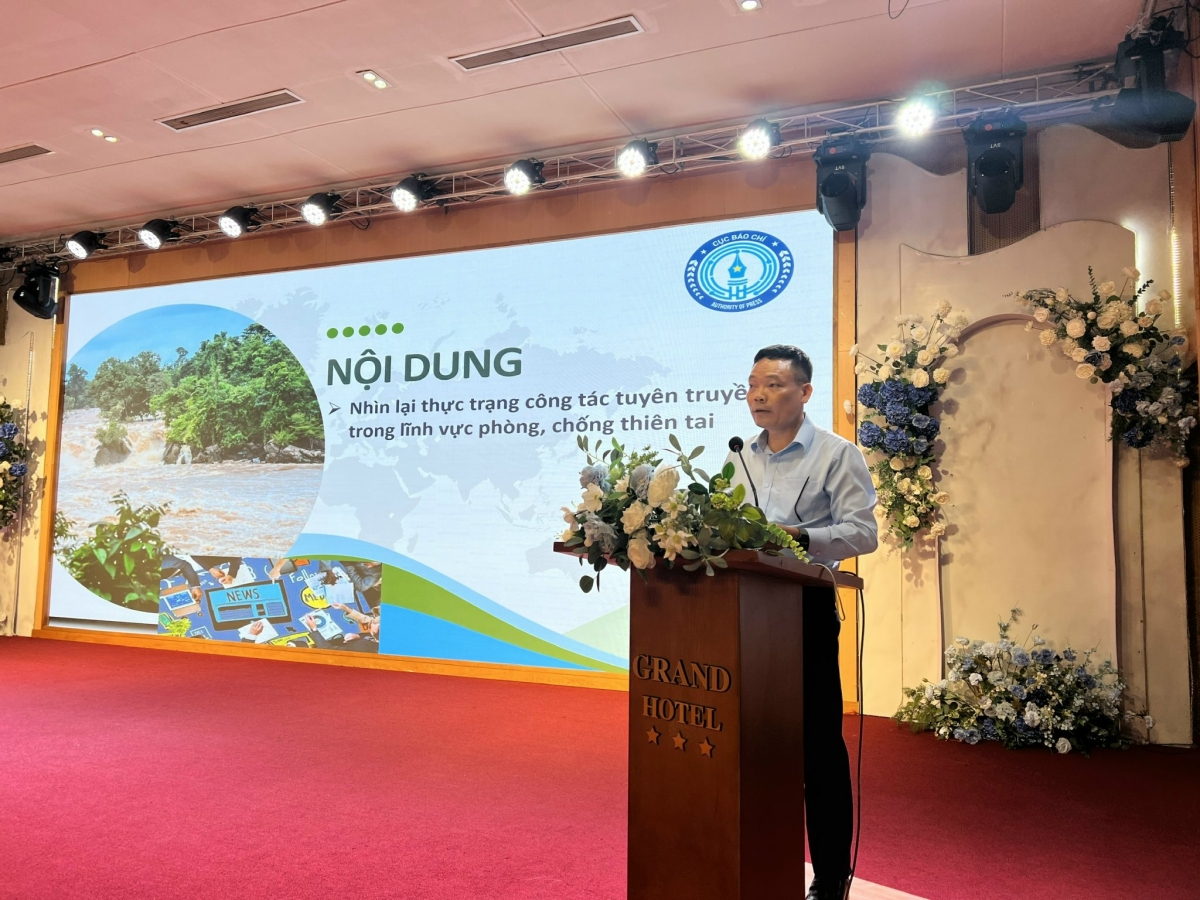The workshop aimed to enhance the capacity of journalists in collecting, updating, and communicating forecast and early warning information during natural disasters, while emphasizing consistent messaging across all three phases: prevention, response, and recovery.
The training also focused on improving field skills for different types of disasters. For typhoons, journalists were advised to monitor developments, material stockpiles, identify safe shelters, evacuation plans, and protection of infrastructure, vessels, and livestock. For flash floods and landslides, trainees were guided on how to detect early warning signs such as ground cracks, unusual sounds, or water discoloration, as well as evacuation procedures and minimizing movement during heavy rain.
Speaking at the workshop, Mr. Nguyễn Văn Tiến, Deputy Director General of VDDMA, highlighted:
“As responsibilities shift to the commune level under the two-tier governance system, the role of commune-level authorities in disaster management has become more demanding, especially with the transfer of 12 key tasks previously held by district authorities. This requires stronger capacity for coordination, command, and timely information delivery. The media must stay close to the ground, support local authorities, and provide accurate and complete information to help the public prepare and respond to natural disasters effectively and safely.”

Mr. Đặng Khắc Lợi, Deputy Director General of the Press Authority, stated:
“Journalists are frontline actors and the bridge between government agencies and the public. Equipping them with the right reporting skills and clear communication guidance will help reduce risk and protect lives and property.”
Ms. Nguyễn Thị Thúy Ái, Deputy Director of the Community-Based Disaster Risk Management and Communications Department under VDDMA, emphasized the need to shift the media approach in disaster communication. Instead of focusing solely on post-disaster damage, the media should promote risk-based perspectives, early warnings, and actionable guidance for communities. She also encouraged wider dissemination of the "four-on-the-spot" model, success stories, and counter fake news to protect the credibility of official information.
Some journalists who directly reported from recent disaster zones shared their experiences, stressing the importance of survival knowledge in extreme weather events. Hazards like strong winds, heavy rain, and landslides can occur unpredictably. Therefore, reporters must understand how to identify disaster risks and be equipped with essential safety gear to ensure their well-being in the field.